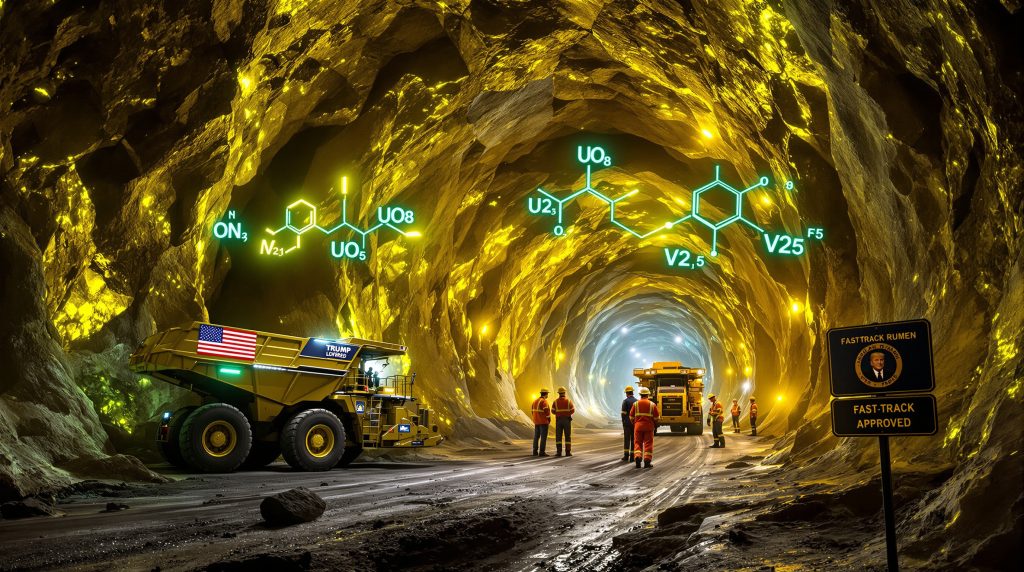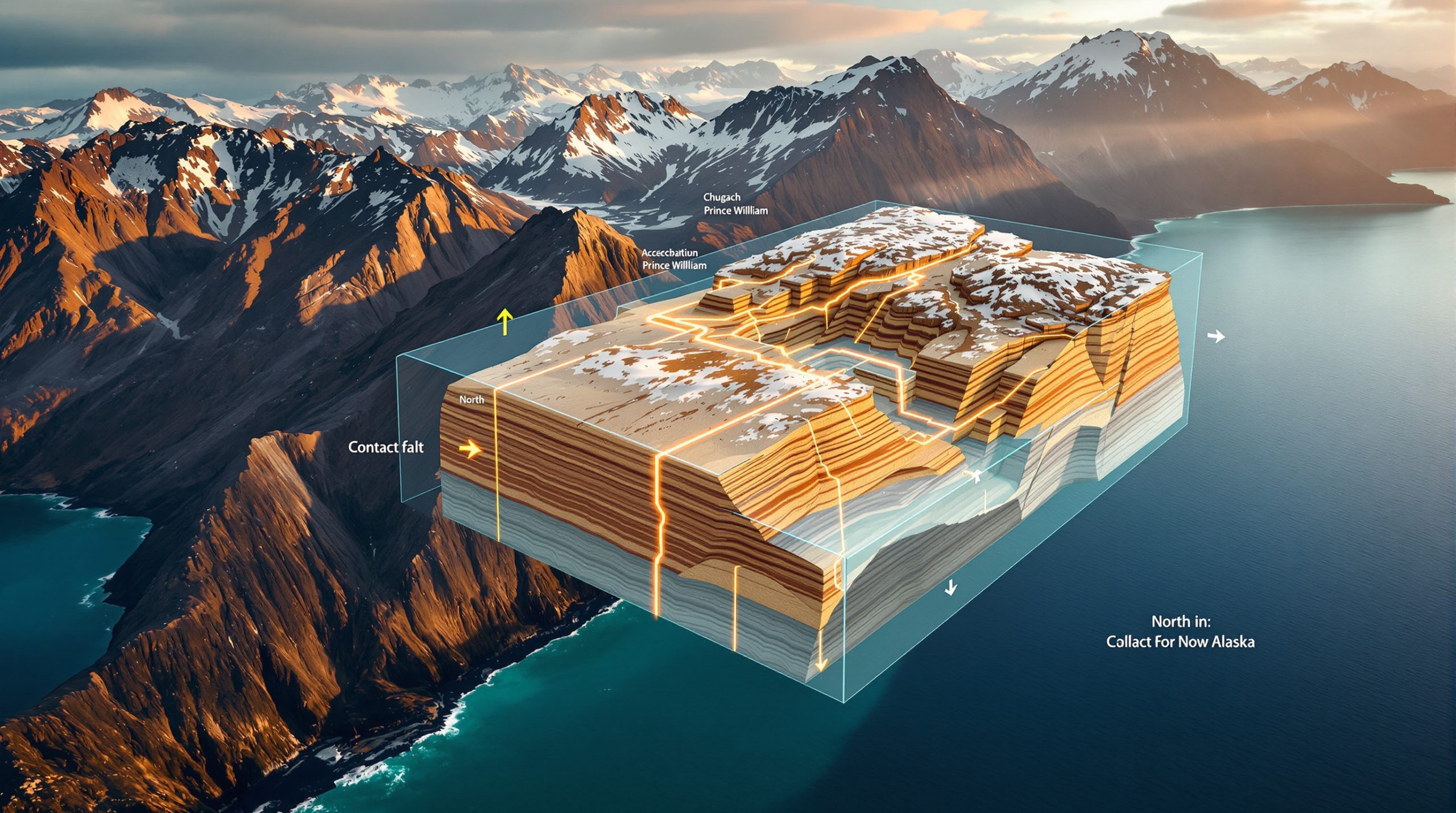How Did Velvet-Wood Become the First Fast-Tracked Uranium Project in the US?
The construction of Velvet-Wood uranium-vanadium project in San Juan County, Utah, marks a significant turning point for the American uranium sector. Velvet-Wood became the first mining operation to benefit from a new federal accelerated review process, designed in response to the national energy emergency declared by President Donald Trump in January 2025. This program created an unprecedented regulatory pathway, aiming to boost domestic critical mineral supply chains.
The United States Department of the Interior (DOI) selected the Velvet-Wood project for expedited review on May 14, 2025. Notably, environmental permitting followed within two weeks, an unusually short timeframe for the mining sector. This streamlined approach drastically cut through bureaucratic delays that often stretch permitting over several years.
Federal and state regulatory agencies worked in close coordination, with the Utah Department of Oil, Gas and Mining issuing the final construction authorization. This rare dual-approval event highlighted governmental alignment on fast-tracking strategic energy projects, shifting the focus towards national supply resilience for uranium—a key fuel for U.S. nuclear power.
The strategic significance of this timeline cannot be overstated. The rapid permitting and the supportive regulatory landscape demonstrate a policy prioritization of domestic uranium production—reversing decades of underinvestment and regulatory inaction on new uranium sources.
Velvet-Wood's rapid progress under the new federal process underscores a national policy reset on uranium, increasingly viewed as critical for both energy security and the clean energy transition.
What Makes the Velvet-Wood Project Uniquely Positioned for Rapid Development?
Several factors distinguish Velvet-Wood as a candidate for fast-tracked advancement compared to other uranium prospects in the United States.
Historical Production Advantages
Velvet-Wood leverages pre-existing infrastructure and decades of operating experience. Initially produced by Atlas Minerals, the Velvet deposit yielded around 4 million pounds of U₃O₈ (1,539 tonnes uranium) and 5 million pounds of V₂O₅ from 1979 to 1984. This history means:
- Substantial verified geological data lowers exploration risk.
- Existing underground workings reduce capital requirements and construction timelines.
- Access to de-risked ore zones with validated mineralization continuity.
Established Resource Base
The project's resource inventory, as of late 2025:
| Resource Category | Uranium (U₃O₈) |
|---|---|
| Measured & Indicated | 4.6 million lbs |
| Inferred | 552,000 lbs |
This solid resource foundation supports near-term production plans and gives investors confidence in project longevity.
Environmental and Strategic Location Advantages
Velvet-Wood's previously disturbed brownfield site, small modern operational footprint, and proximity to established mining infrastructure support responsible development. These characteristics also helped facilitate its expedited regulatory review.
Located within an historic uranium mining district, the project benefits from:
- Pre-existing access roads
- Local workforce skilled in uranium mining
- Supportive state policies towards mineral extraction
Reduced Environmental Impact
The project leverages its underground mine workings, limiting the need for expansive new surface disturbance. This approach streamlines permitting and minimizes environmental risk, aligning with modern best practices for responsible mineral development.
What Are the Immediate Construction Plans for Velvet-Wood?
Following receipt of all federal and state permits, construction of Velvet-Wood uranium-vanadium project is set to commence with groundbreaking targeted within 30 days. The construction rollout, designed for rapid reactivation, includes several key operational steps.
30-Day Construction Timeline: Key Activities
- Mobilization of equipment and personnel to the site
- Reopening and rehabilitating the historic mine portal, including:
- Structural reinforcement
- Upgrading ventilation for modern safety standards
- Installing updated safety and monitoring equipment
- Initiating a comprehensive dewatering program to clear accumulated groundwater
- Developing surface infrastructure, such as:
- Ore and waste handling systems
- Maintenance and admin buildings
- Environmental monitoring stations
- Ore stockpiling and loading facilities
- Conducting detailed underground mapping and inspections to assess ground conditions
- Driving a new decline (incline tunnel) to open up additional ore zones and access new mineralization for future mining cycles
Each of these steps is critical to bringing Velvet-Wood safely back into operation and ensuring compliance with modern regulatory and safety standards.
Integrated Project Management
A focus on phased construction avoids bottlenecks and positions the site for a seamless transition from reactivation to full-scale production once mill infrastructure is ready.
How Does Velvet-Wood Fit Into Anfield's Broader Production Strategy?
Velvet-Wood is not a standalone asset, but rather a cornerstone in a vertically integrated production approach.
Mine-to-Mill Integration
Anfield Energy is advancing the Shootaring Canyon mill, one of only three licensed and permitted uranium mills in the U.S., in parallel with mine development. The mill, idle since 1982, gives Anfield several strategic advantages:
- In-house processing reduces reliance on external milling
- Minimizes transportation costs and logistical risks
- Allows for synchronized production rollouts between the mine and mill
- Enhances the ability to manage ore blending, mill feeds, and tailings in line with regulatory requirements
| Asset | Status | Strategic Value |
|---|---|---|
| Velvet-Wood Mine | Construction-ready | Low-risk, past-producer uranium/vanadium deposit |
| Shootaring Canyon Mill | Permitted, standby | Critical, rare U.S. mill asset |
Timeline Synchronization
Advancing construction of Velvet-Wood uranium-vanadium project in parallel with mill recommissioning provides flexibility. Anfield's approach allows for rapid transition from development to uranium and vanadium output once both assets are ready, potentially within 12-18 months.
What Is the Historical Context of the Velvet-Wood Project?
Understanding Velvet-Wood's current opportunity requires a look at its legacy.
- Atlas Minerals produced uranium and vanadium from the Velvet mine (1979-1984) before shutting down amid a prolonged global uranium price slump.
- Uranerz subsequently drilled the adjacent Wood area (1985-1991), but never advanced it to mining due to persistently low uranium market dynamics throughout the 1980s and early 1990s.
- Anfield Energy acquired Velvet-Wood and related assets from Uranium One in 2015, consolidating two adjacent mineralized trends under single ownership for the first time.
This consolidation created synergies for resource optimization, reduced duplicative infrastructure, and allowed a holistic development approach as uranium prices and policy attention rebounded post-2020.
What Impact Will This Project Have on Domestic Uranium Production?
The construction of Velvet-Wood uranium-vanadium project comes at a crucial time for the U.S. uranium mining sector. Domestic uranium output has declined sharply, supplying less than 5% of domestic reactor demand as of the mid-2020s, according to U.S. Energy Information Administration data.
Bringing Velvet-Wood into production stands to deliver several benefits:
- Boosts U.S. production capacity at a time of heightened supply chain risk
- Demonstrates the viability of restarting brownfield mines with expedited permitting
- May set a precedent for other U.S. projects seeking similar fast-tracking under federal strategies for critical minerals
- Diversifies vanadium supply, which is increasingly important for battery technologies and steel production
Production Outlook
While exact targets have not been published, based on the resource size and historical performance, estimates suggest Velvet-Wood could sustain annual production in the range of 500,000 to 1,000,000 pounds of U₃O₈, with significant vanadium byproduct, subject to technical and market factors. This marks a multifold increase over current U.S. uranium mining output.
Velvet-Wood's progress will be closely watched, as it may shape future regulatory approaches and serve as a model for similar idled uranium assets across the Western United States.
How Does the Velvet-Wood Project Compare to Other Uranium Developments?
Within the global uranium mining landscape, Velvet-Wood is a noteworthy player in the U.S. but remains mid-tier when measured against major projects in Kazakhstan or Canada.
| Project | Country | Resource Size (U₃O₈) | Status |
|---|---|---|---|
| Velvet-Wood | USA (Utah) | 4.6M lbs M&I, 0.55M inf. | Construction |
| McArthur River | Canada | Over 280M lbs | Active |
| Inkai | Kazakhstan | 247M lbs | Active |
Key differentiators for Velvet-Wood:
- Accelerated permitting: set a national first for expedited approval
- Past-producer status: reduces technical uncertainty
- Planned vertical integration: unique among most U.S. peers
- Vanadium co-product potential: adds economic resilience, especially in volatile uranium markets
Velvet-Wood's economics benefit from relatively high ore grades by U.S. standards and reduced capital needs thanks to existing assets—all factors that favor competitive cost structures.
What Environmental and Regulatory Considerations Apply?
Although approved under an accelerated protocol, Velvet-Wood must comply with a suite of federal and state regulations covering safety, environmental protection, and land reclamation.
Key regulatory steps have included:
- Approval from the DOI for expedited federal review and environmental assessment
- Utal Department of Oil, Gas and Mining approval for state-level environmental, reclamation, and water management plans
Essential environmental management requirements for construction of Velvet-Wood uranium-vanadium project include:
- Installation of groundwater monitoring wells and hydrogeological studies
- Dust and emission controls
- Strict protocols for managing radioactivity and radon emissions
- Waste segregation and storage in line with state and federal guidelines
- Financial bonding for site reclamation and long-term monitoring after closure
Given its brownfield status, many stakeholder concerns around pristine land disturbance are minimized, but continuous public engagement and transparent monitoring remain required.
What Are the Technical Aspects of Mining at Velvet-Wood?
While specific mining methods have not been formally disclosed, past production and geological context suggest that the project will use conventional underground mining techniques such as room-and-pillar extraction in sandstone-hosted mineralization.
Key technical factors anticipated:
- Selective extraction to optimize grade control and minimize ore dilution
- Mechanical mining methods to reduce drilling and blasting, enhancing safety and stability
- Use of advanced ventilation systems to control radon and airborne particulates
- Dewatering and ground control programs to manage geotechnical risks in historic workings
- Efficient ore handling and transport systems linking the underground mine with the Shootaring Canyon mill
These approaches reflect both modern mining best practices and lessons learned from the property's historic operation.
What Does This Development Mean for the Future of U.S. Uranium Production?
Velvet-Wood's advancement signals a potential turning point for American uranium mining after decades of contraction.
Potential industry-wide impacts include:
- Serving as a model for streamlined regulatory approval and brownfield redevelopment
- Demonstrating that U.S. uranium mining can be modernized and made economically viable with aligned federal and state policies
- Providing a supply chain buffer in the face of geopolitical tensions and US uranium market disruption
- Reinforcing domestic commitments to clean, nuclear-powered energy as part of decarbonization goals
The U.S. uranium market is seeing renewed investor interest due to higher commodity prices, looming supply gaps, and strategic support from federal critical mineral initiatives. The US uranium import ban has further emphasized the need for domestic production. The Velvet-Wood project is well positioned to contribute near-term domestic supply and may catalyze an industry-wide revival if successfully executed.
While promising, investors and stakeholders should be aware of the inherent risks of uranium project development, including commodity price cycles, regulatory uncertainties, and technical challenges unique to reactivating idled mines.
Disclaimer: All forward-looking statements regarding production, timelines, and market impact are subject to risks, technical reviews, and changing regulatory frameworks. Readers should consult official regulatory and company disclosures for the most current project status information.
FAQ: Velvet-Wood Uranium-Vanadium Project
When is production expected to begin at Velvet-Wood?
While the company has not disclosed an official production start date, the ambitious construction timeline sets a target of potential first production within 12-18 months, dependent on underground work and mill recommissioning progress.
How much uranium and vanadium could the project produce annually?
Estimated production ranges between 500,000 to 1,000,000 pounds of U₃O₈ annually, with significant vanadium output also anticipated, subject to grade and recovery rates.
What impact will this project have on local employment?
Typical underground uranium operations of similar scale support 50-100 direct jobs, plus additional positions in logistics, processing, and services. This creates a substantial economic uplift for rural San Juan County.
How does this project relate to the broader uranium market?
While Velvet-Wood is modest compared to top global mines, it is highly significant for U.S. supply security and serves as a proof-of-concept for expedited permitting and brownfield mine revival. The Patterson Corridor uranium update shows other North American projects are also advancing, though Velvet-Wood's progress is particularly notable.
What safety measures will be implemented at the mine?
Modern uranium mining standards require extensive safety planning, incorporating radiation detection and protection protocols, ventilation systems, personal protective equipment, and continuous health surveillance of workers.
Further Exploration
For those seeking to deepen their understanding of uranium mining dynamics and nuclear energy policy, World Nuclear News offers extensive, regularly updated resources on global trends, market risks, and technical advances across the entire nuclear fuel cycle. Additionally, the Department of the Interior provides context on how the Velvet-Wood project fits within the broader U.S. critical minerals strategy.
Recent developments show that while Velvet-Wood moves forward, other uranium operations like Paladin halts uranium mining in Namibia, illustrating the complex global supply dynamics at play in this strategic sector.
Wondering How to Catch the Next Major Mineral Discovery?
Discovery Alert's proprietary Discovery IQ model provides real-time alerts when significant mineral discoveries are announced on the ASX, giving traders and investors a crucial market advantage. Explore why mineral discoveries can generate substantial returns by visiting Discovery Alert's dedicated discoveries page.




